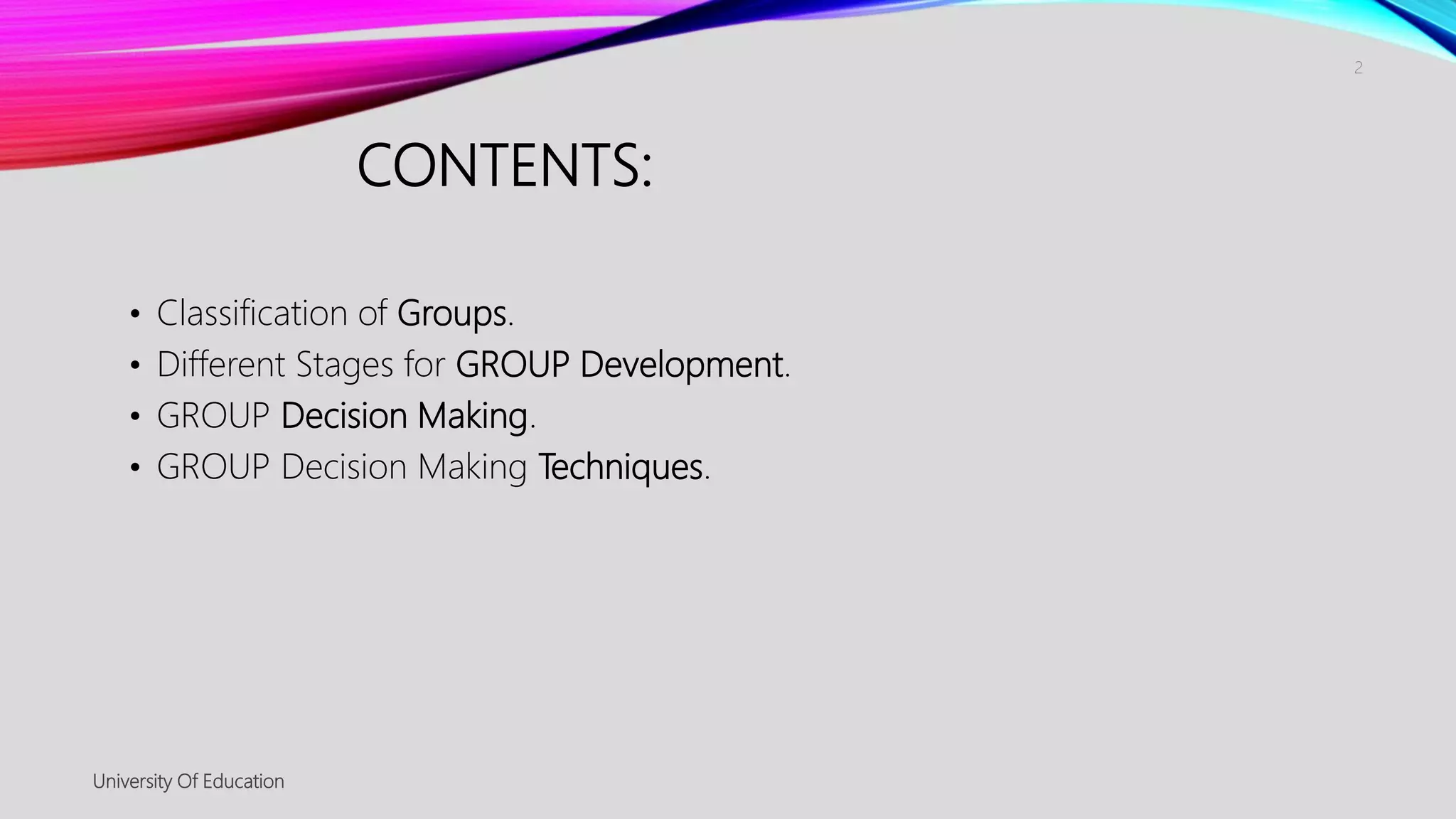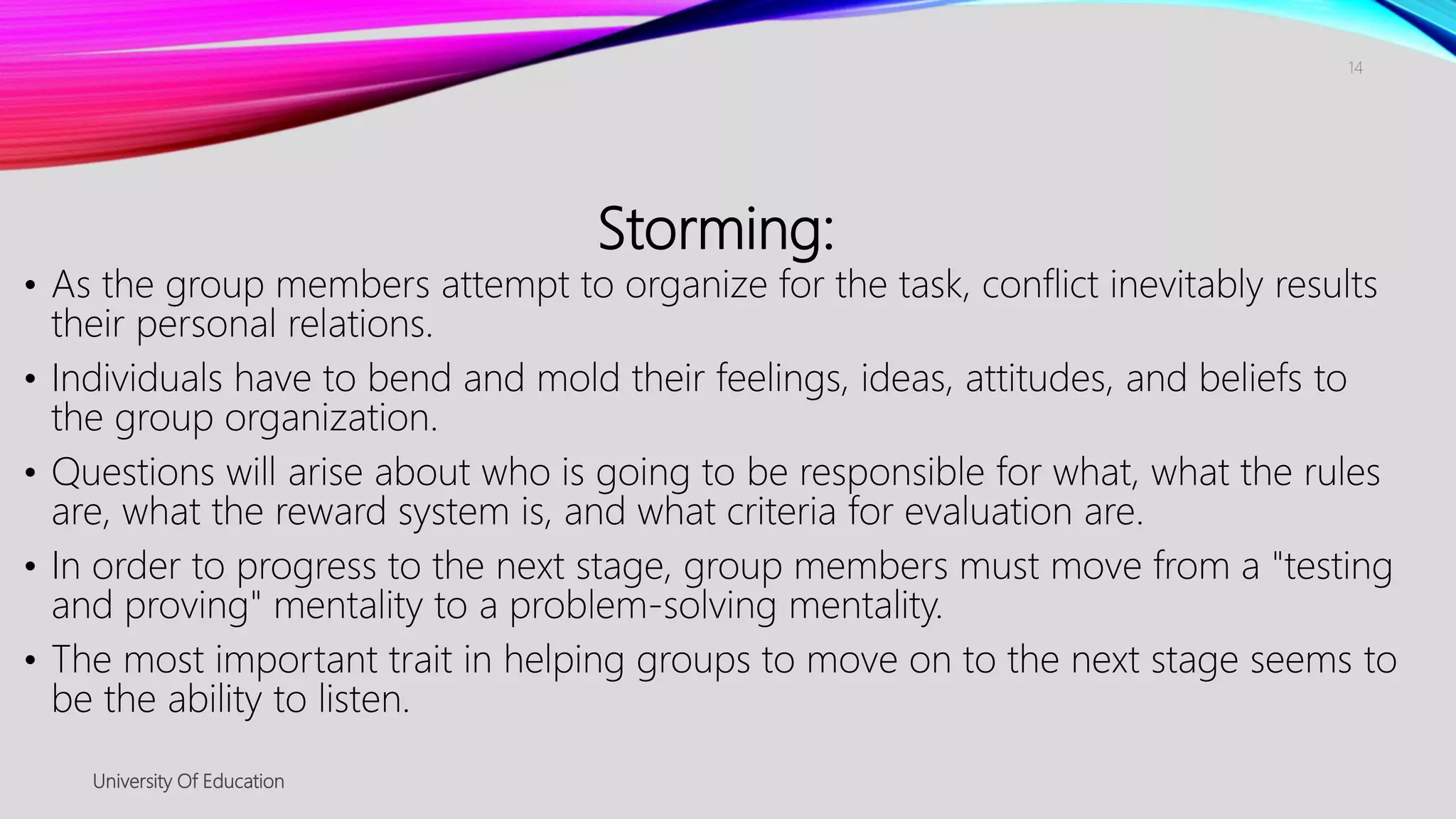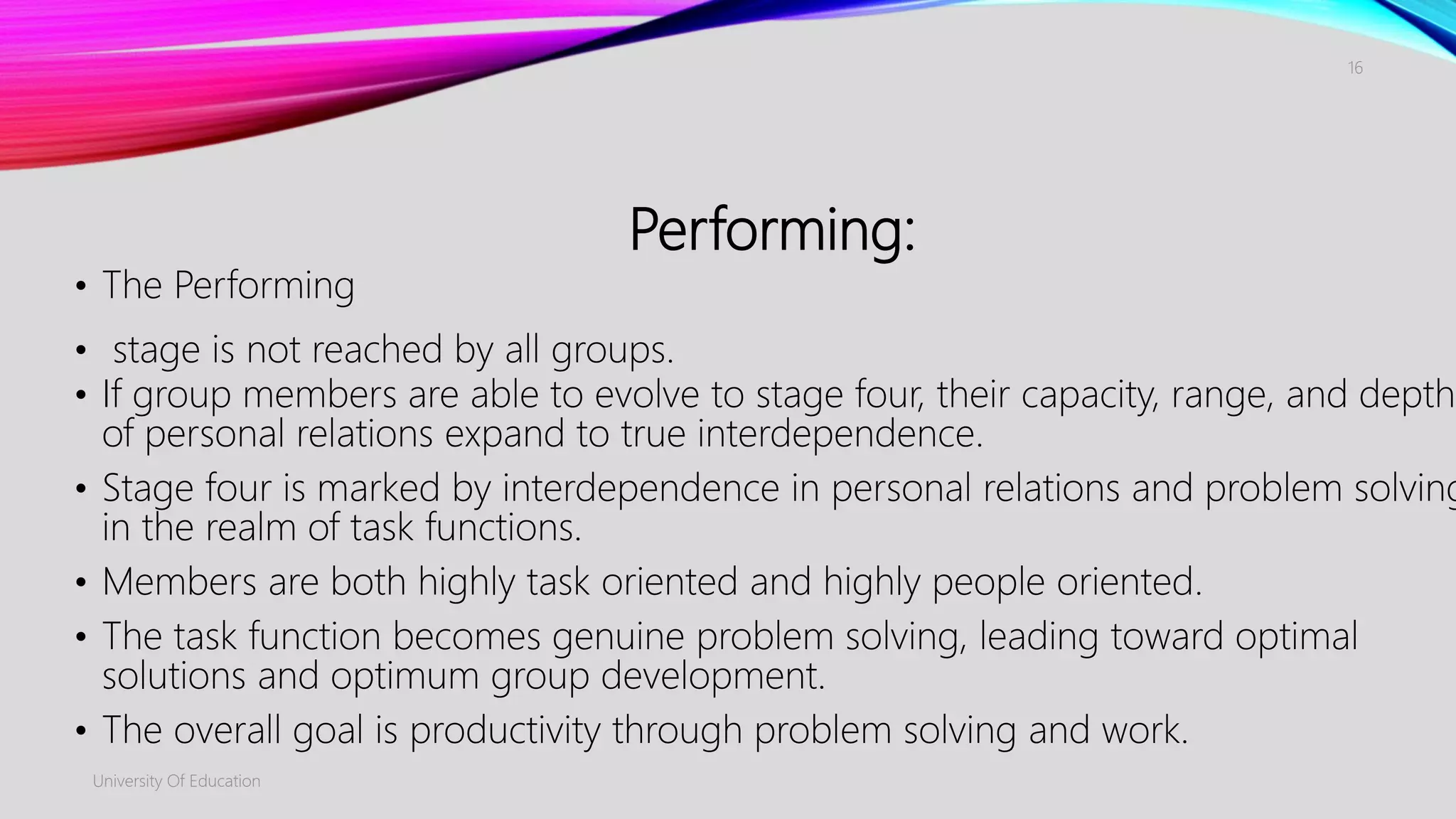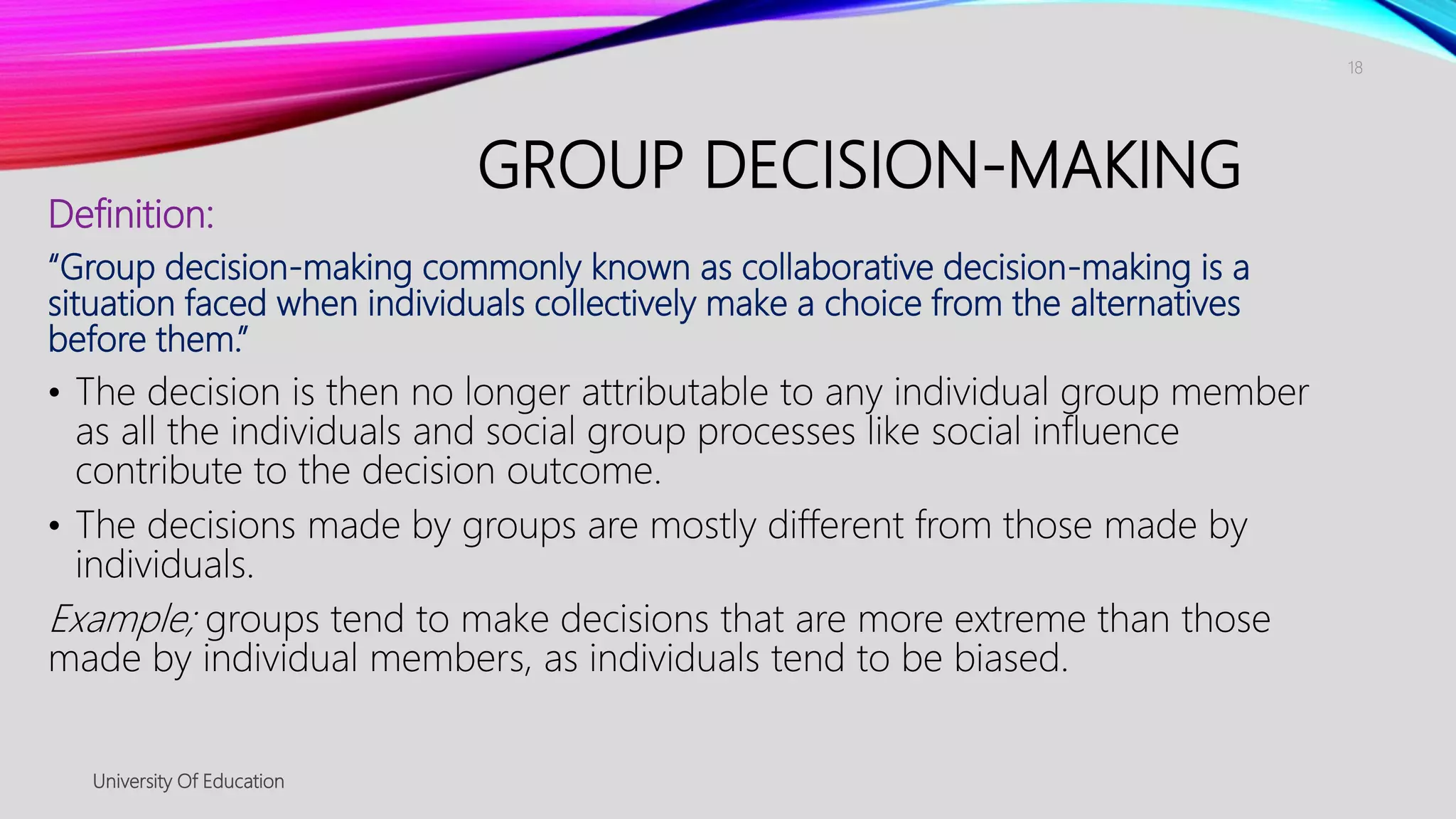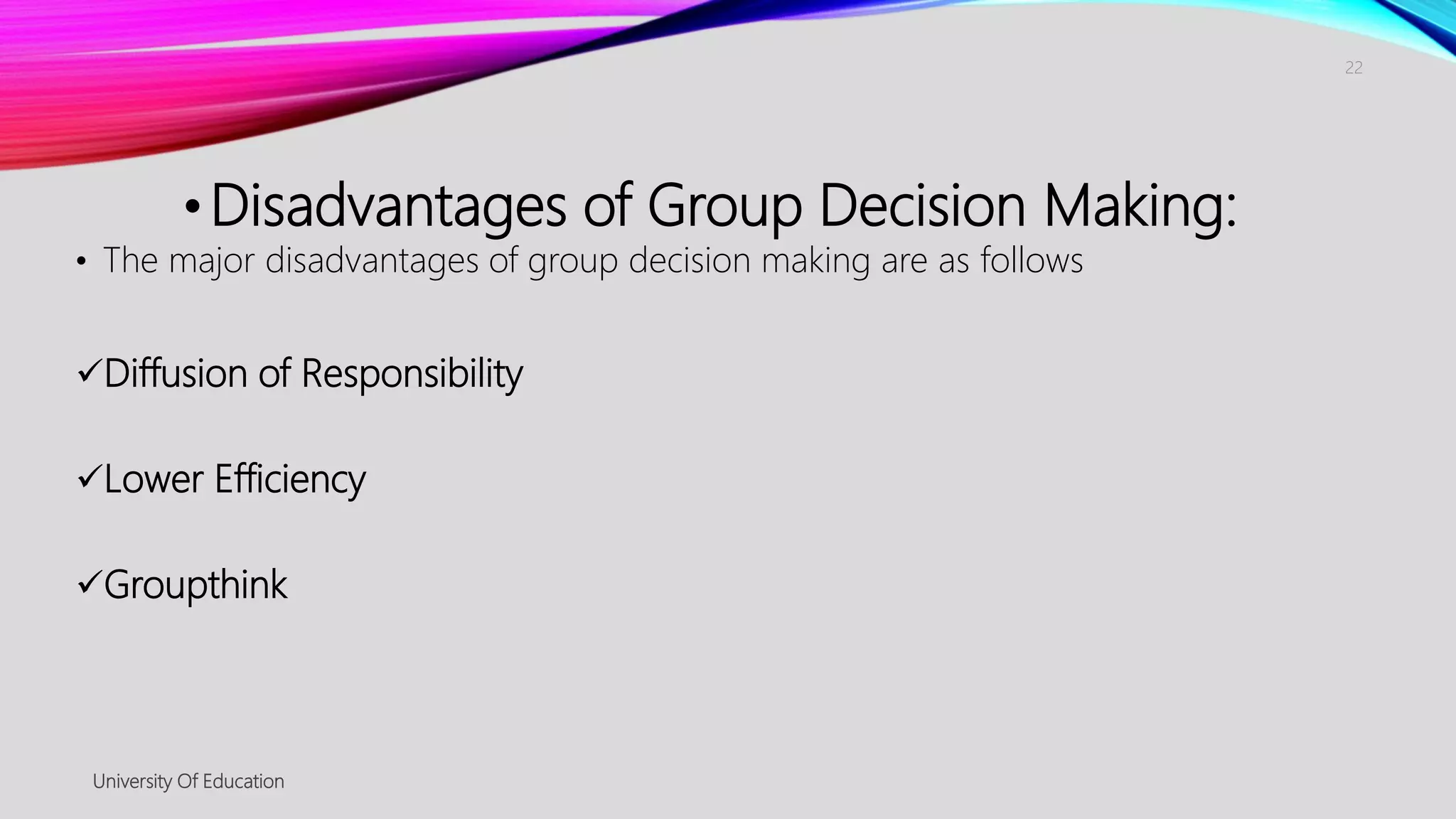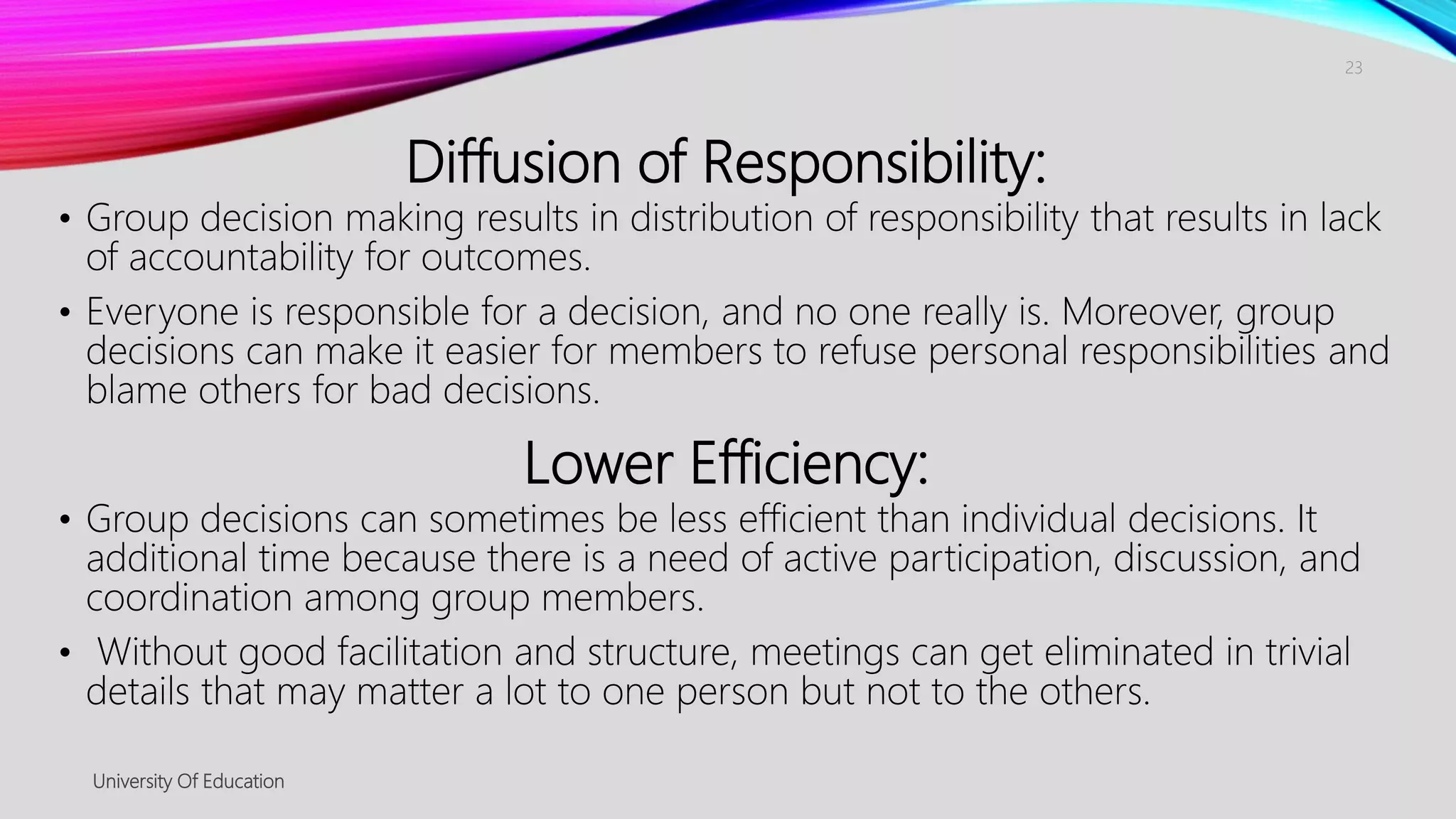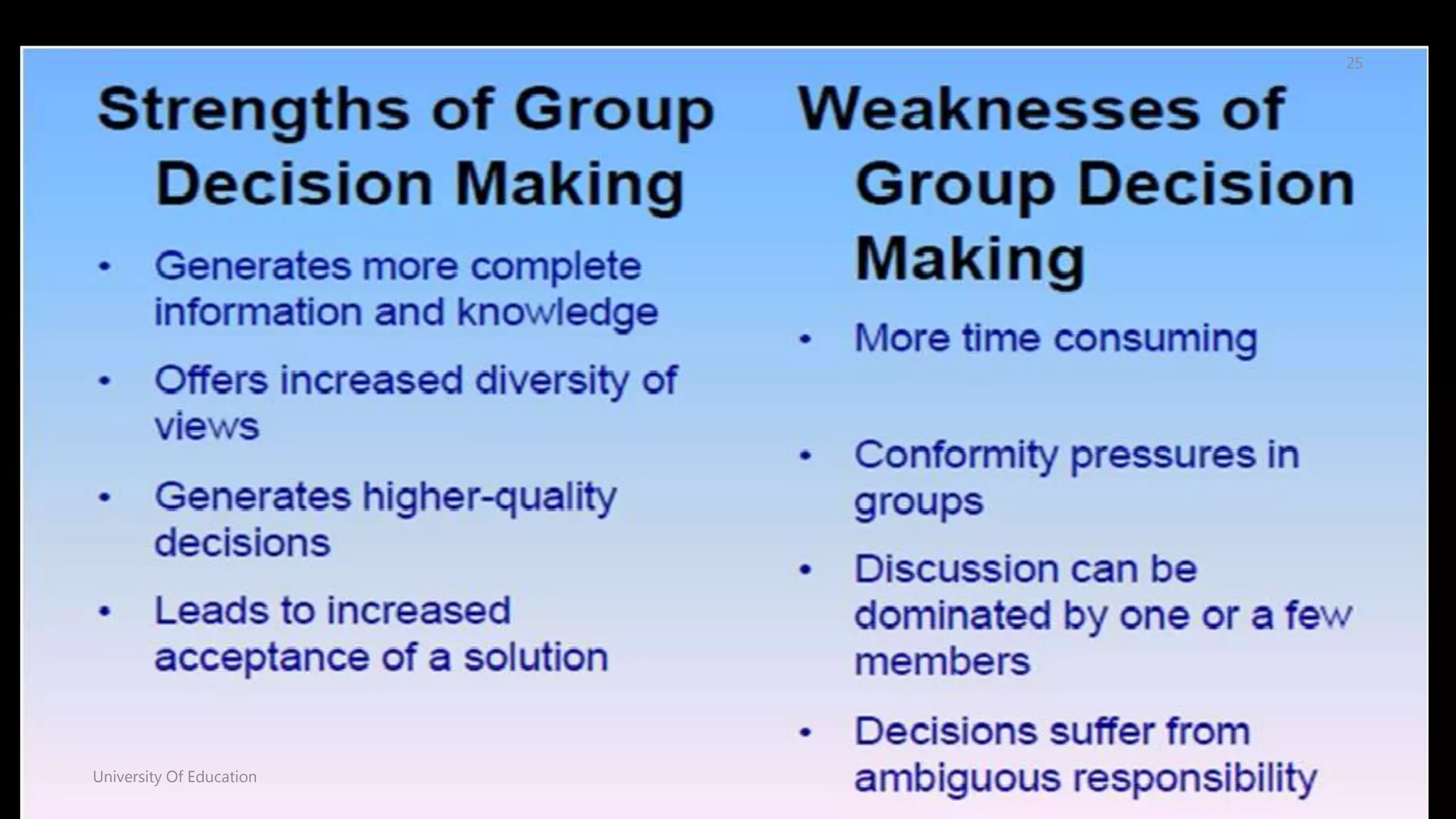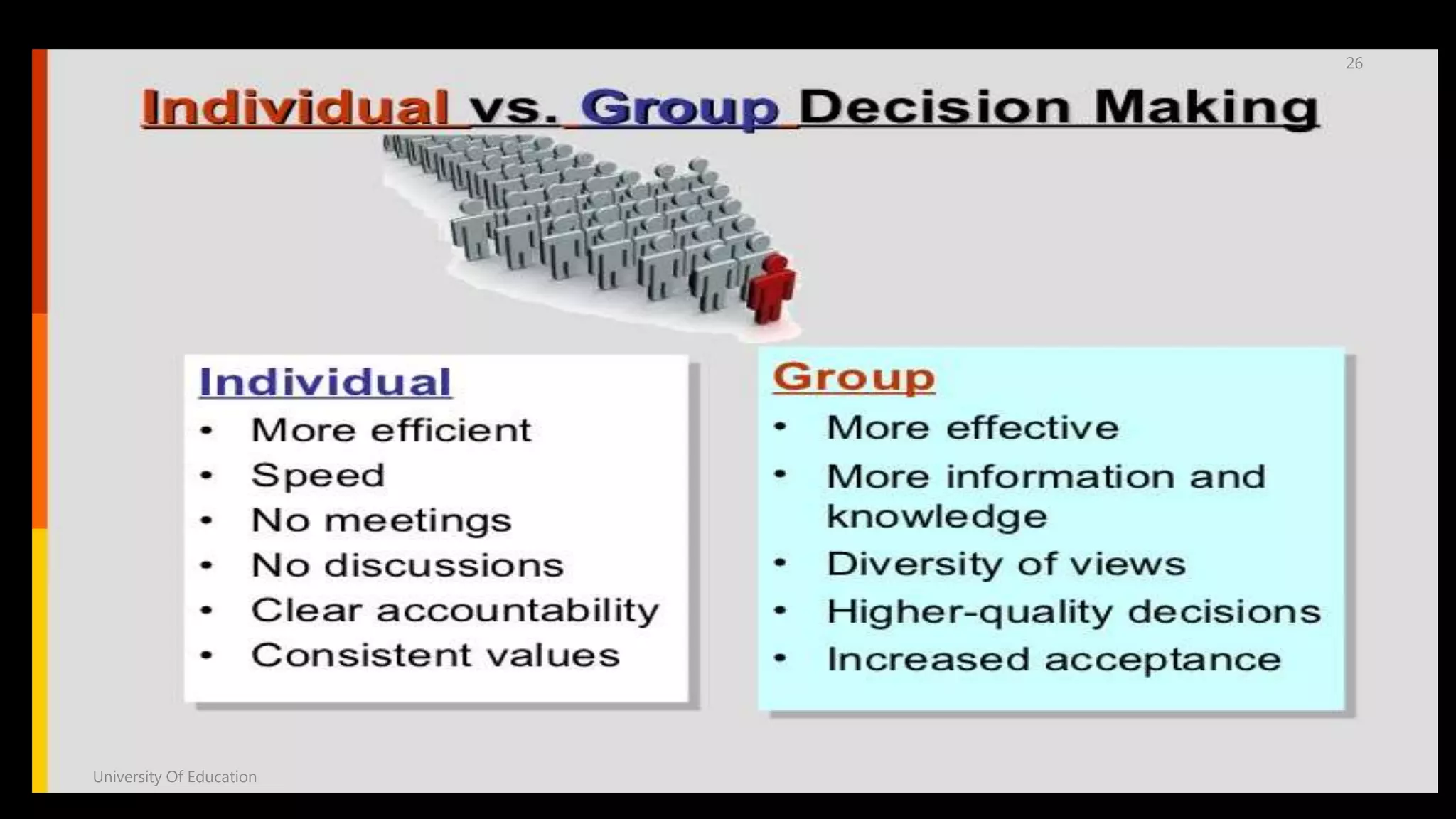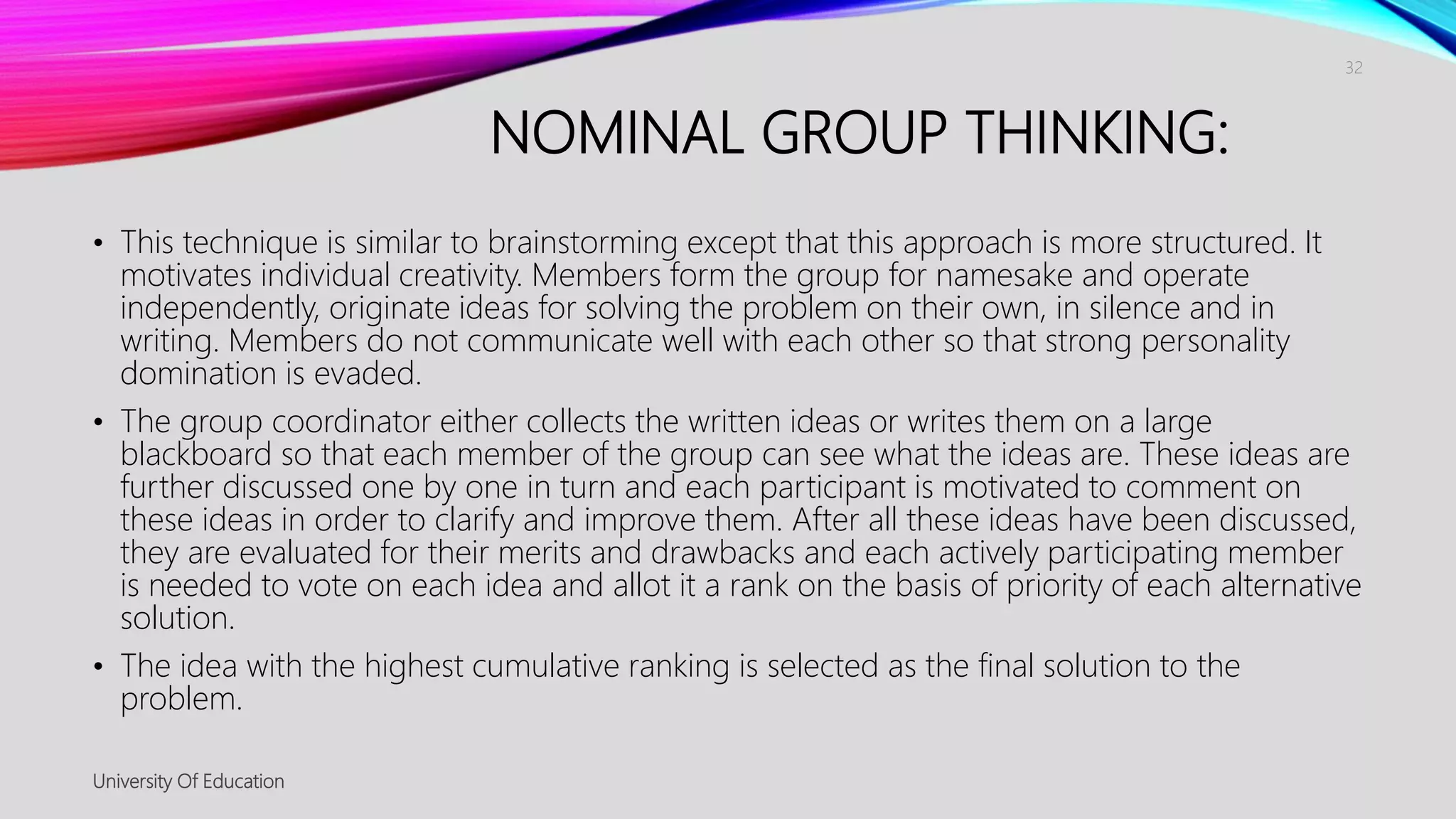- Groups play an important role in organizational behavior. There are various stages of group development including forming, storming, norming, performing, and adjourning.
- Group decision making has advantages like synergy and sharing of information, but also disadvantages like diffusion of responsibility, lower efficiency, and groupthink.
- Techniques for effective group decision making include brainstorming, nominal group thinking, didactic technique, and the Delphi technique. These techniques aim to generate novel ideas and reach consensus while avoiding biases.

